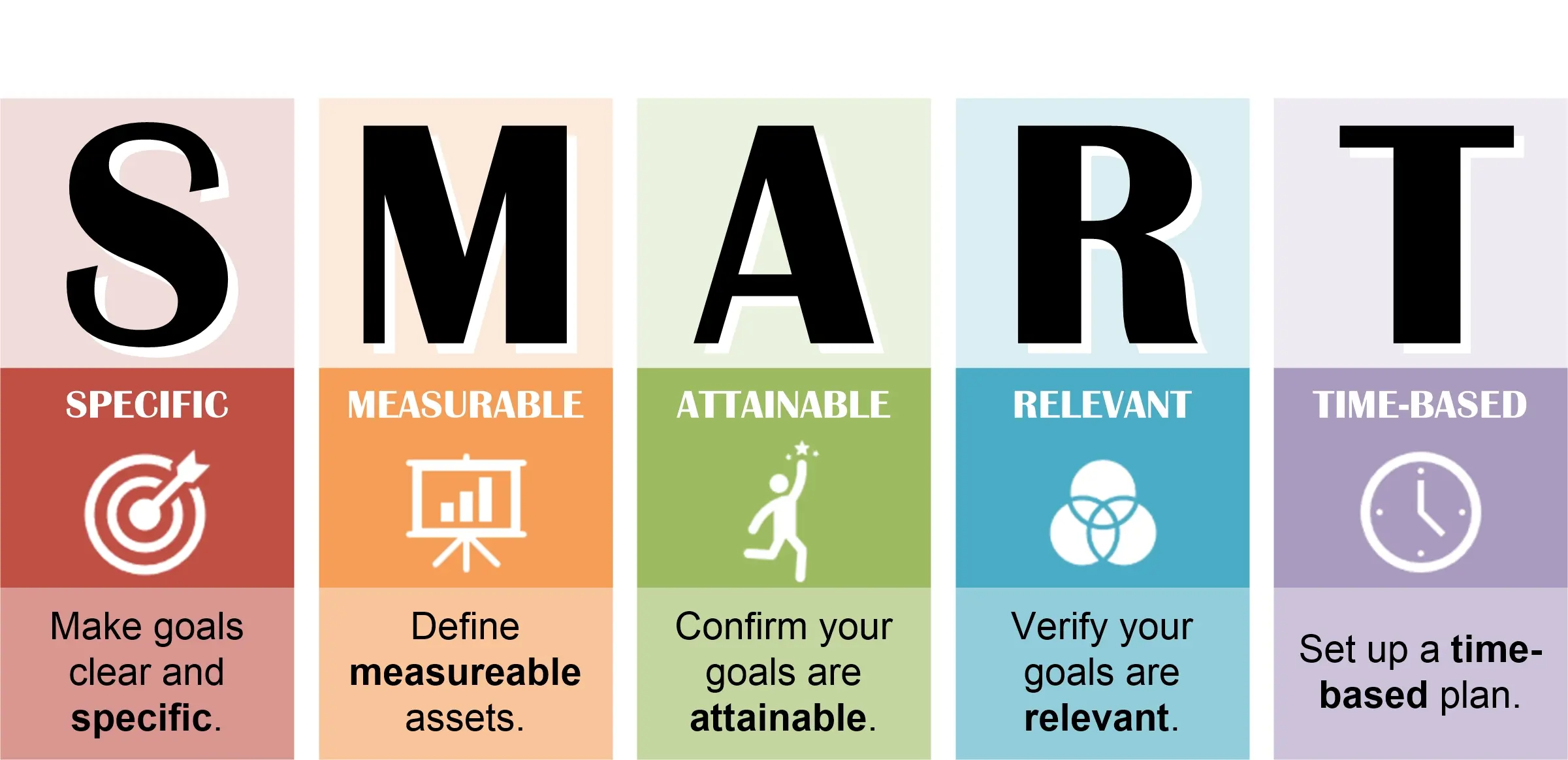One of the most valuable tools emphasized in Collaborative Care is goal setting. Goal setting helps patients grow, reflect, and adjust their behaviors within the scope of their expectations. However, sometimes the hardest thing about setting goals is knowing how to do it the right way to sets you up for success. We’ve compiled tips and resources you can share with your patients to help them set strong, achievable goals that will help them along their journey.Â
Step One
The first step to setting achievable and realistic goals is ensuring they are SMART! Help your patients understand the concept of SMART goals before diving into their personal goals.

Step Two
The next step is to help patients figure out which areas of their lives they want to focus on most. To help with this process, we suggest using the My Goals worksheet. This resource outlines six important areas in a person’s life and encourages them to reflect on where they want to see a change. Once they complete the worksheet, you can work with them to narrow down their goal to one or two specific areas to start.Â
Step Three
For goal setting to be successful, it’s important to help your patients use their new insights to set a focused goal. Here are a couple of additional worksheets with this goal-setting in mind.Â
Change Plans Worksheet – This resource frames goal setting as a gradual change over time as opposed to a milestone a person can, or should, hit. The worksheet prompts patients to take an introspective approach to their plan, whereas other worksheets may ask for a concrete “who, what, where.†This is an especially helpful option for your patients who associate “goal setting†with negative connotations.
Setting Goals: Worksheet (EFDC) – This resource encourages your patients to reflect on their experiences and skills in the field they wish to focus on. From there, the patient can write out their goal and the challenges they may face along the way. This can be a great option for your patients who are comfortable with goal setting and want to get straight to the point.
Is your patient still having trouble achieving their goals? It may be helpful to ask them to assess if the goal is a good fit for them at this time. We suggest using our “Readiness Rulers†to do this. This resource helps patients determine how ready they are to work on their goal, how important their goal is to them, and how confident they are that they can achieve this goal. Sometimes these rulers can be a key tool in revealing an issue stopping them from reaching their goals.
No matter which resources you choose to use to help your patients, remember that change takes time and effort. Don’t be afraid to try new approaches as you help them set forth and achieve their goals.